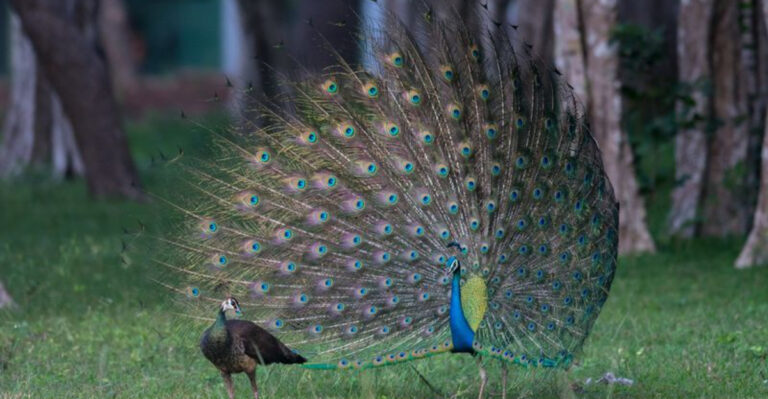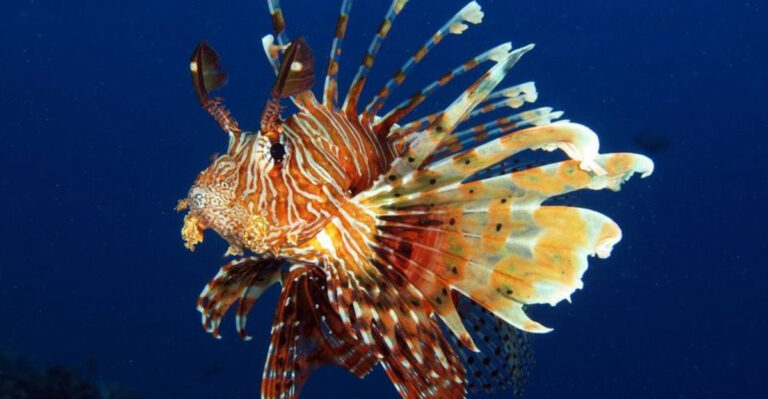The 9 Biggest Freshwater Predators Ever Discovered And 4 Smaller Species You Should Know
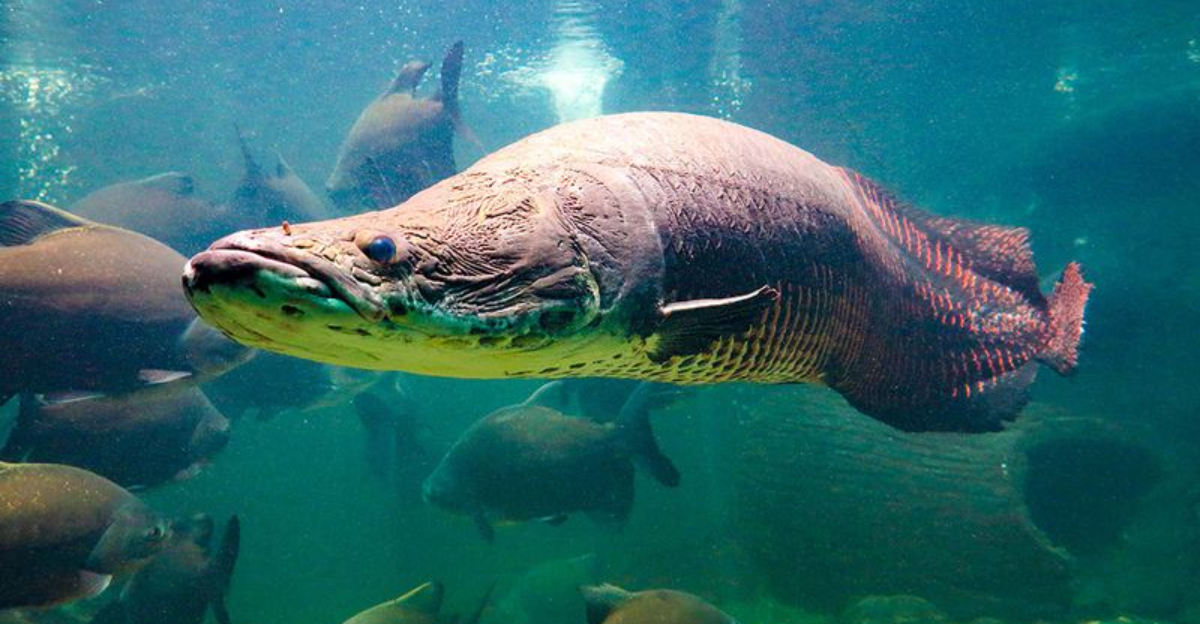
Ever wondered what lurks beneath the surface of our lakes and rivers? Freshwater ecosystems are home to some truly remarkable predators that have evolved incredible hunting abilities.
From ancient giants that could swallow a human whole to smaller but equally fascinating hunters, these aquatic predators showcase nature’s diverse approaches to survival in watery realms.
1. The Mekong Giant Catfish

Did you know these gentle giants can weigh as much as a small car? Growing up to 10 feet long and tipping scales at 650 pounds, they’re the largest purely freshwater fish on Earth.
Unlike their name suggests, adult Mekong catfish actually don’t eat other fish! They switch to a vegetarian diet, filtering algae from the water. Sadly, these magnificent creatures face extinction due to overfishing and dam construction.
2. The Alligator Gar
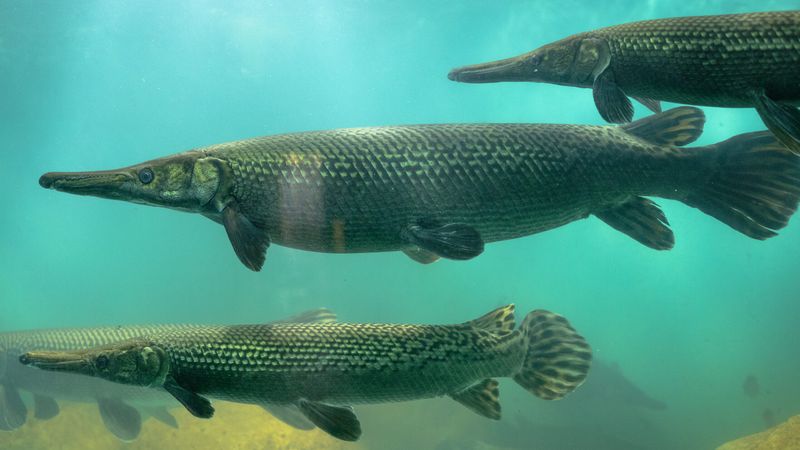
Looking like it swam straight out of the dinosaur age, this living fossil has remained virtually unchanged for 100 million years! With armor-like scales and double rows of teeth, it’s built like an underwater tank.
These North American natives can reach 10 feet long and weigh over 300 pounds. Despite their fearsome appearance, they rarely attack humans and actually help ecosystems by controlling invasive fish populations.
3. The Nile Crocodile
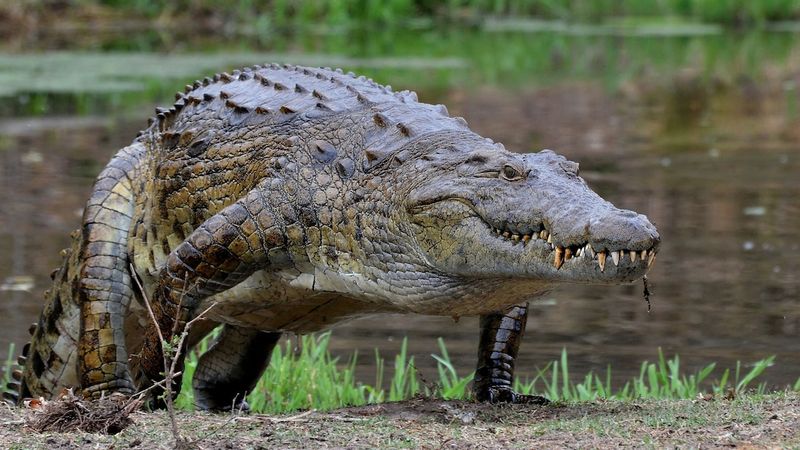
Forget what you’ve heard about sharks! These ambush specialists are responsible for more human fatalities annually than any other wild predator. Masters of patience, they can wait motionless for hours before exploding into action.
A full-grown Nile croc can reach 20 feet and weigh over 1,600 pounds. Their bite force measures a bone-crushing 5,000 pounds per square inch – strong enough to snap a zebra’s spine in a single chomp!
4. The Black Caiman
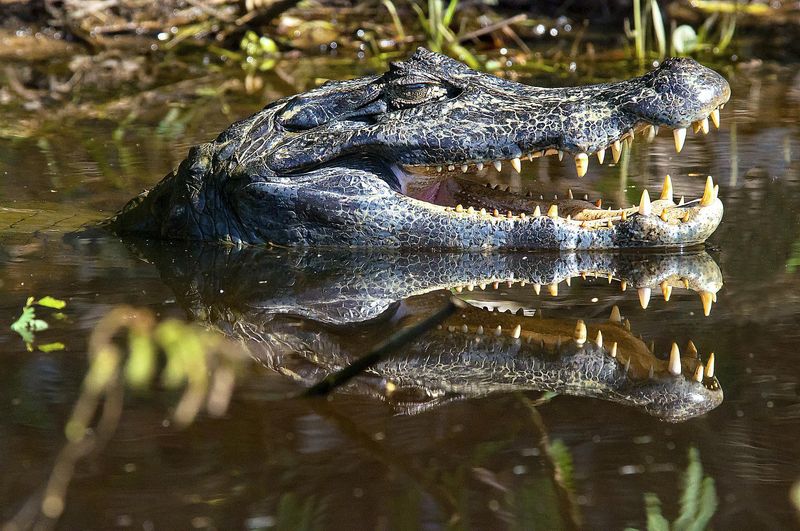
Lurking in the muddy waters of the Amazon Basin, these stealthy hunters are the largest predators in the rainforest ecosystem.
Males can grow beyond 16 feet long, making them the biggest of all caiman species. Black caimans hunt everything from fish to capybaras and even jaguars that venture too close to the water’s edge! Their pitch-black coloration makes them nearly invisible during nighttime hunts when they’re most active.
5. The Wels Catfish
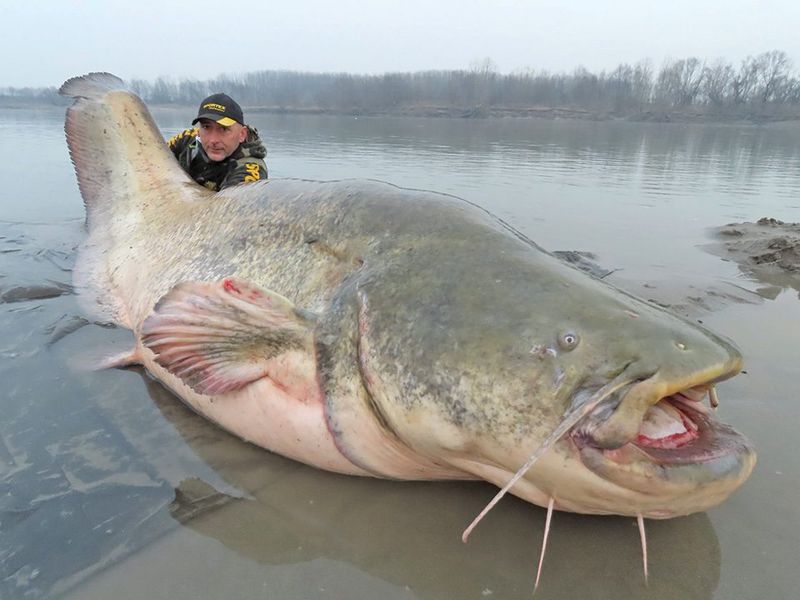
European fishermen tell tales of these river monsters growing large enough to pull small boats underwater! While that’s exaggerated, these whiskered giants regularly reach 10 feet and 300+ pounds.
Unlike most fish, Wels catfish are opportunistic hunters that use their sensitive whiskers to locate prey in murky waters. They’ve been documented beaching themselves to grab pigeons from shorelines and can live 80+ years in the wild.
6. The Goliath Tigerfish
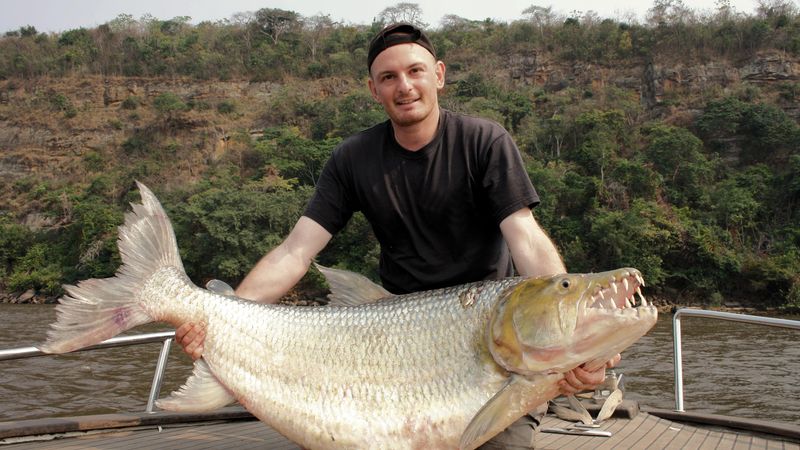
Imagine piranha-like teeth but in a fish the size of a 7-year-old child! Congo River locals fear these aggressive hunters more than any other aquatic animal. Their 32 razor-sharp teeth interlock perfectly when their jaws snap shut.
These African predators have been recorded attacking humans and even small crocodiles. Their incredible speed and power let them take down prey their own size, earning them the nickname “river wolf” among scientists who study them.
7. The Arapaima
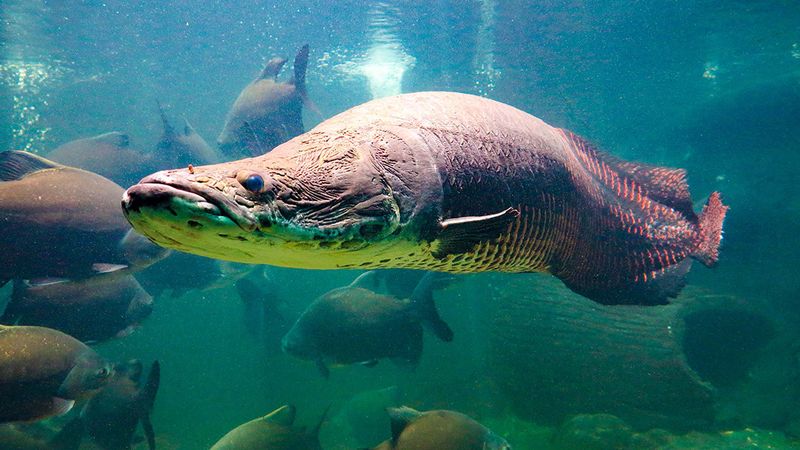
Armored with coin-sized scales that can repel piranha bites, these Amazonian giants have outlasted the dinosaurs! They’re among the largest freshwater fish, growing up to 15 feet long and weighing over 400 pounds.
Arapaimas are air-breathers that must surface every 10-20 minutes. This quirky adaptation helps them survive in oxygen-poor waters but makes them vulnerable to spear fishermen. Their tongue is so rough it’s used by locals as a grater for guarana seeds!
8. The Nile Perch
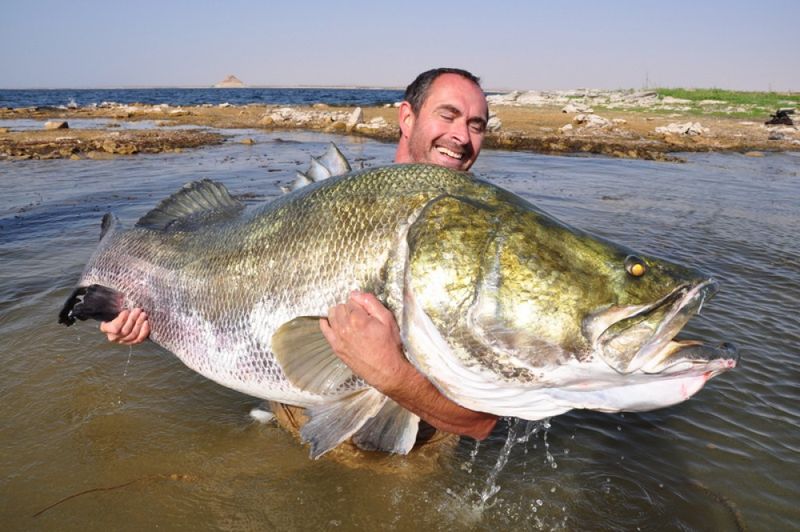
When introduced to Lake Victoria in the 1950s, these voracious predators triggered one of history’s worst ecological disasters. They devoured over 200 native fish species into extinction within decades! Growing up to 6 feet and 440 pounds, Nile perch are swimming eating machines.
Their huge mouths can swallow prey half their own size. Despite the ecological damage they’ve caused, they’ve created a valuable commercial fishing industry worth millions.
9. The Chinese Paddlefish

Sadly, we’ve lost this remarkable species forever – scientists declared it extinct in 2020. Once patrolling the Yangtze River, these behemoths grew to 23 feet long, making them contenders for the world’s largest freshwater fish.
With a distinctive sword-like snout used to detect electrical signals from prey, they evolved over 200 million years ago. Dam construction, pollution, and overfishing drove them to extinction despite being protected since the 1980s.
10. The Electric Eel
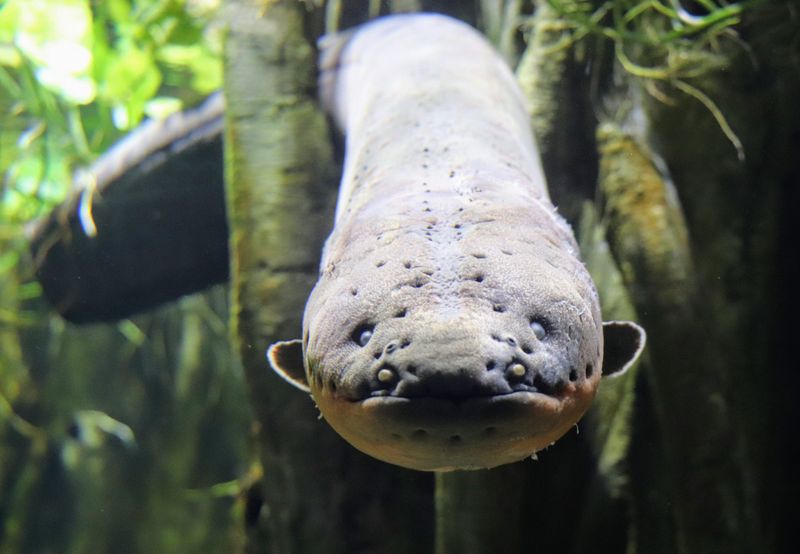
Far from actual eels, these Amazonian fish are living batteries that can generate 860-volt shocks – enough to knock down a horse! They use electricity for hunting, defense, and even navigation in murky waters. Growing to about 8 feet long, they’re actually air-breathers that must surface regularly.
Their specialized organs take up 80% of their bodies, with only 20% dedicated to vital organs. A single electric eel can discharge enough electricity to power 10 light bulbs!
11. The Piranha

Hollywood has turned these small fish into monsters, but the reality is more complex. While they do have teeth sharp enough to slice through flesh, unprovoked attacks on humans are extremely rare. Red-bellied piranhas hunt in schools, communicating with sounds humans can’t hear.
Their feeding frenzies happen mostly during dry seasons when food is scarce. Despite their fearsome reputation, most species are actually omnivores that primarily eat plants and seeds!
12. The Northern Pike
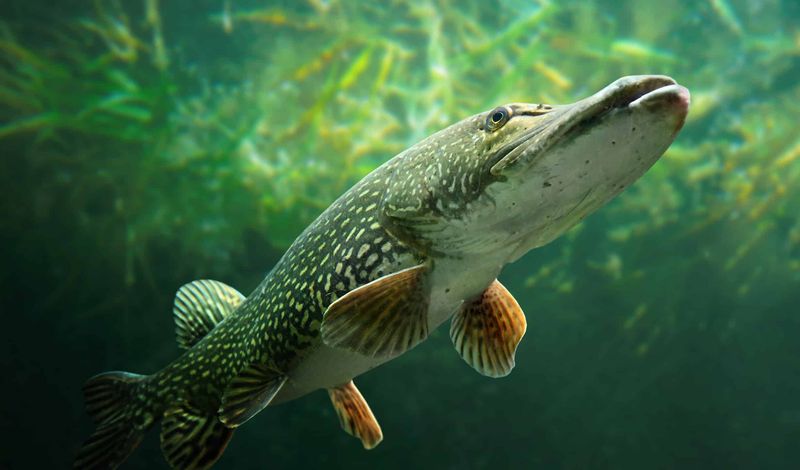
Known as “water wolves” among anglers, these ambush predators are the perfect killing machines of northern lakes.
Their torpedo-shaped bodies can accelerate from standstill to 10 mph in a split second! Pike have backward-facing teeth that prevent prey from escaping once grabbed. Their incredible camouflage lets them blend perfectly with underwater vegetation. Some specimens live 25+ years and grow beyond 4 feet long, becoming the undisputed top predators in their ecosystems.
13. The Giant Salamander
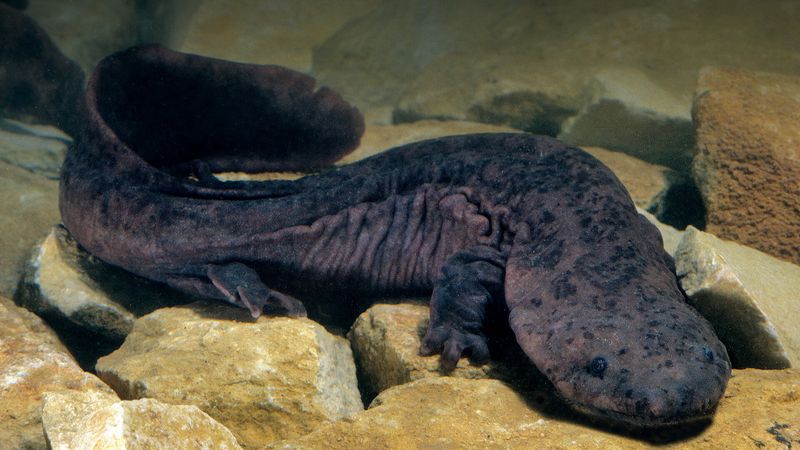
Looking like something from a sci-fi movie, Chinese giant salamanders can reach 6 feet long and live 60+ years! As the world’s largest amphibians, these living fossils have remained largely unchanged for 170 million years. Despite their sluggish appearance, they’re lightning-fast when striking prey.
They lack traditional teeth but have sharp bone ridges in their jaws that create a vise-like grip. Sadly, they’re critically endangered due to habitat loss and being considered a delicacy in Asia.


